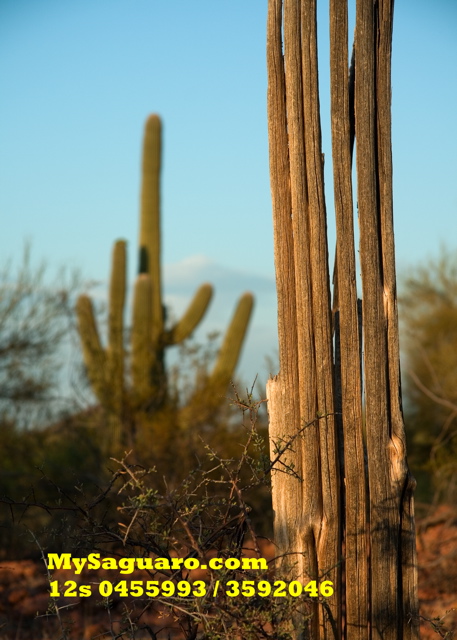ABOUT THE SAGUARO - The saguaro is one of the most recognizable residents of the Sonoran Desert. This giant cactus can live for 200 years,reach heights of up to 60 feet or more and weigh up to 7 tons. Over 70% of its weight is water. The saguaro grows slowly, between 1 and 1.5 inches yearly during its early years. Look for these young plants under a "nurse tree", which shades the saguaro. Branches, "arms", begin to appear at 50 years or older. the arms are used as nests for birds, while woodpeckers drill holes for their nests. The 3 inch flower blooms from late April through early June. Bats and birds pollinate the flowers. As the heat presses, the flower becomes a green fruit which ripens during the summer and matures to a deep red fruit. There can be 2000 seeds or more in a single fruit. a saguaro can grow 100 fruits in a season, feeding birds, animals, and insects. The native people within the region, the Tohono O'odham, formerly known as the Papago, begin their new year when the saguaro fruits ripen. The Tohono O'odham refer to the saguaro in the names of several seasons. |
 From Gary Paul Nabhan's book, The Desert Smells Like Rain: A Naturalist in Pagago Indian Country : "Saguaros are not seen as a "separate" lifeform at all, not something of an "other," outside world. Papago classify saguaros as part of humankind; a saguaro cactus is "that which is human and habitually stands on earth." .... It strikes me that the Papago liken saguaros, Cereus gigantea, to Homo Sapiens because no matter how much they tend to dominate a landscape, they are still vulnerable. .... I was startled when I came upon some Papago who clearly take heed of the "human" vulnerability of saguaros. I heard a young city boy ask an elderly Papago woman if, lacking a harvesting pole, one could ever collect fruit off the tall cacti by throwing rocks at the tops to knock the fruit down. "NO!" Marquita replied with a strain of horror in her voice. "The saguaros-- they are Indians too. You don't EVER throw ANYTHING at them. If you hit them in the head with rocks you could kill them. You don't ever stick anything sharp into their skin either, or they will just dry up and die. You don't do anything to hurt them. They are Indians." |